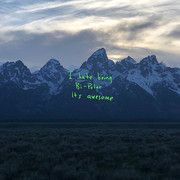|
Sponsored by |
|---|
|
|
|
-
Need help navigating the forum? Find out how to use our features here.
-
Did you know we have lots of smilies for you to use?
You are using an out of date browser. It may not display this or other websites correctly.
You should upgrade or use an alternative browser.
You should upgrade or use an alternative browser.
Lunacy Random Thoughts
- Thread starter ddave
- Start date
Marlon Rando
Well-Known Member
I used to love browsing the record albums! Closest thing for me today...our local libraries all have literally tens of thousands of CDs.....all in nice racks....all alphabetical by genre -- like the good old days. AND...I now have bi-focals so I can read some of the tiny print!
I am yet to download music from the cloud.
vfm
I am yet to download music from the cloud.
vfm
Vitolo
Vaporist
The US standard railroad gauge (distance between the rails) is 4 feet, 8.5 inches. That's an exceedingly odd number. Why was that gauge used? Well, because that's the way they built them in England, and English engineers designed the first US railroads. Why did the English build them like that? Because the first rail lines were built by the same people who built the wagon tramways, and that's the gauge they used. So, why did 'they' use that gauge then? Because the people who built the tramways used the same jigs and tools that they had used for building wagons, which used that same wheel spacing. Why did the wagons have that particular odd wheel spacing? Well, if they tried to use any other spacing, the wagon wheels would break more often on some of the old, long distance roads in England . You see, that's the spacing of the wheel ruts. So who built those old rutted roads? Imperial Rome built the first long distance roads in Europe (including England ) for their legions. Those roads have been used ever since. And what about the ruts in the roads? Roman war chariots formed the initial ruts, which everyone else had to match or run the risk of destroying their wagon wheels. Since the chariots were made for Imperial Rome , they were all alike in the matter of wheel spacing. Therefore the United States standard railroad gauge of 4 feet, 8.5 inches is derived from the original specifications for an Imperial Roman war chariot. Bureaucracies live forever. So the next time you are handed a specification/procedure/process and wonder 'What horse's ass came up with this?', you may be exactly right. Imperial Roman army chariots were made just wide enough to accommodate the rear ends of two war horses. (Two horses' asses.)  Now, the twist to the story: When you see a Space Shuttle sitting on its launch pad, there are two big booster rockets attached to the sides of the main fuel tank. These are solid rocket boosters, or SRBs. The SRBs are made by Thiokol at their factory in Utah . The engineers who designed the SRBs would have preferred to make them a bit fatter, but the SRBs had to be shipped by train from the factory to the launch site. The railroad line from the factory happens to run through a tunnel in the mountains, and the SRBs had to fit through that tunnel. The tunnel is slightly wider than the railroad track, and the railroad track, as you now know, is about as wide as two horses' behinds. So, a major Space Shuttle design feature, of what is arguably the world's most advanced transportation system, was determined over two thousand years ago by the width of a horse's ass. And you thought being a horse's ass wasn't important? Ancient horse's asses control almost everything.

Vitolo
Vaporist
Sometime in the late 40’s, before either man was famous, Frank Sinatra appeared in a theater in New York. After his show he went to Harlem to see the Will Maston Trio led by a young Sammy Davis Jr. Frank is blown away by Sammy’s talent and after the show he asks Sammy to come see his show.
A week goes by. No Sammy. Sinatra goes back to Harlem to see the Will Maston Trio again and asks Sammy why he didn’t show. Sammy said he was there but they wouldn’t let him in. Frank stormed back to the theater, tore up his contract in front of them, and never performed there again. That would be a common theme during the course of their friendship and careers. When Sammy wasn’t allowed to play at the Copacabana, Frank wouldn’t play there either.
When Sammy was refused a Las Vegas hotel room, Frank said, “Give him my room!” After Sammy’s car accident where he lost his eye, it was Sinatra who paid all his medical bills. After 5 decades and 40 years of performing together, a reporter once asked Frank why he was always so charitable to Sammy. Frank responded in three words, “He’s my brother.”

A week goes by. No Sammy. Sinatra goes back to Harlem to see the Will Maston Trio again and asks Sammy why he didn’t show. Sammy said he was there but they wouldn’t let him in. Frank stormed back to the theater, tore up his contract in front of them, and never performed there again. That would be a common theme during the course of their friendship and careers. When Sammy wasn’t allowed to play at the Copacabana, Frank wouldn’t play there either.
When Sammy was refused a Las Vegas hotel room, Frank said, “Give him my room!” After Sammy’s car accident where he lost his eye, it was Sinatra who paid all his medical bills. After 5 decades and 40 years of performing together, a reporter once asked Frank why he was always so charitable to Sammy. Frank responded in three words, “He’s my brother.”
Share:
|
Sponsored by |
|---|
|
|
|
